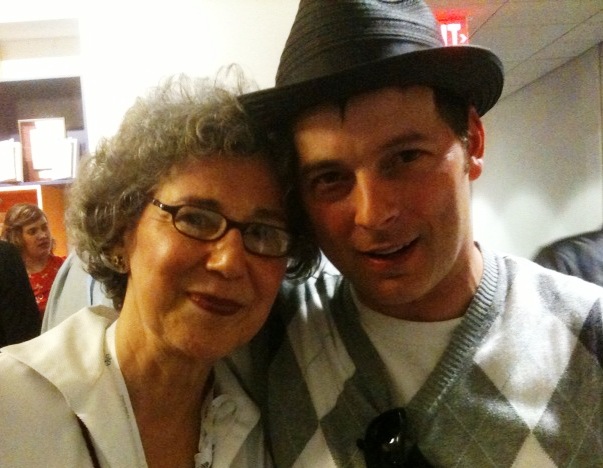 Chuck
Adams is executive editor of Algonquin Books of Chapel Hill. In a publishing
career that reaches back 40 years, he has acquired and edited hundreds of
fiction and nonfiction titles from authors as diverse as Sandra Brown, James Lee Burke, Mary Higgins Clark and Ronald Reagan. Since coming to
Algonquin Books in 2004 he has continued to advocate for books that feature
vivid storytelling that will entrance readers, with one prime example being Water
for Elephants by Sara Gruen (Algonquin,
2006).
Chuck
Adams is executive editor of Algonquin Books of Chapel Hill. In a publishing
career that reaches back 40 years, he has acquired and edited hundreds of
fiction and nonfiction titles from authors as diverse as Sandra Brown, James Lee Burke, Mary Higgins Clark and Ronald Reagan. Since coming to
Algonquin Books in 2004 he has continued to advocate for books that feature
vivid storytelling that will entrance readers, with one prime example being Water
for Elephants by Sara Gruen (Algonquin,
2006).
How did you find Jonathan Evison's West of Here?
Johnny's manuscript came to me in the usual way, through an agent, in this case Mollie Glick at Foundry. I read the first few pages of the e-mail submission, liked the voice and the lightness of tone, and I printed out the first 100 pages and gave those to an intern to read. A day or so passed and Danny, the intern, returned, very excited, to ask for the rest of the manuscript. A glowing written report soon followed. I quickly started reading, called Mollie to tell her I was liking it very much so that she'd not sell it out from under me. I finished it in another day. By then, I was completely besotted.
What drew you so strongly to the novel?
In addition to the voice and the lightness of tone, what really captured me was how reading the novel was like reading a dialogue between two generations, born more than 100 years apart. That and the audacity--so unlike anything I'd ever read before. I loved the characters, the way Johnny had drawn each one so carefully, giving each his/her own voice, a complete life history. And I can't forget the setting, the woebegone little town of Port Bonita, Washington. Another major virtue was that it's really about something important--the way this nation came together, the way the world we live in was shaped, the way we create the future, how one man's success can become another man's failure, and how a footstep will echo and echo and echo through the years, leaving its imprint generations after.
West of Here, with its ambition and breadth, embraces a Then (1889/1890) and Now (2006) vision of the Olympic Peninsula and the town of Port Bonita in its storytelling; it teems with a wealth of characters, enough tales to fill six novels, and much sly humor and high drama. Did you find it challenging to encourage Jonathan to stay true to his kaleidoscopic approach while balancing all the elements that make the novel so rich and satisfying?
Even before I made an offer to his agent, Johnny and I talked about the novel and the work I'd want him to undertake, the kind of editing I would plan to do, the rewriting and reshaping that I thought was needed to make the read even more satisfying. I found the dialogue he'd created between the two different generations of Port Bonitans to be one of the novel's greatest strengths, and the kaleidoscope effect worked beautifully within the structure he had created. The initial edit was on my part mostly an effort to sort everything out, to arrange the stories in such a way that there wouldn't be so many different chronologies going on at the same time within the two separate time-frames. As for the number of characters, I believe I actually had Johnny add some; I specifically remember asking for a stronger female presence in the early years and suggesting one specific character--I had Johnny go back in and further strengthen the female characters, not only giving them more to do, but in one instance changing the nature of the character itself, making her hopefully more likable.
 |
| Algonquin publisher Elisabeth Scharlatt with Evison. |
You have been quoted as saying, "I also love this excitement when a new manuscript comes in and you think, 'Okay, I'm ready to fall in love again.' " I presume that you have to convince others at Algonquin that any new love of yours is true and lasting (i.e., that the book will find its readership). Can you describe how that process works at Algonquin?
The falling in love part of the process, though it happens rarely, is the easiest and most wonderful part of my job. Convincing others to share the love is more difficult. The process of convincing my boss and colleagues that a book is worthy of our publishing it is not markedly different from the process I experienced at the other houses I worked for. I take the project to the editorial board, where the publisher, assistant publisher and other four editors will discuss with me the pros and cons of the work as they see it. One of the great things about Algonquin--and this is different from my other experiences--is that even if the publisher and several of the other editors don't share my vision, they still will encourage me to try to buy the book if they feel my passion is convincing. Because we do publish (approximately) only 10 fiction titles each year, we need to convince ourselves that there is a reasonably sized readership out there for every title, one that our amazing publicity and marketing departments can locate and charm without too much effort.
What particular sections of the novel, or scenes, come to mind as ones that you predict will grab readers and be retold enthusiastically around dinner tables?
There are so many great scenes in West of Here that it's hard for me to choose, or to predict what others will respond to. Merely thinking of singling out one or another has just made me want to read it all again.
You grew up in Virginia, went to college and law school in North Carolina and now live in Chapel Hill again after many years in New York City. Your area of the country is justly famous for a lovely mild climate. As you edited Jonathan's descriptions of the wildly erratic weather patterns of the Pacific Northwest, were you tempted to don foul-weather gear and visit the actual territory to see it for yourself?
Certainly, in working on the novel I developed a vivid sense of what life on the Olympic Peninsula must be like. A visit, yes, that's something I'll gladly do, although the extreme weather (I did weather for years in New York City) is not so appealing to someone now comfortably living in central North Carolina.

